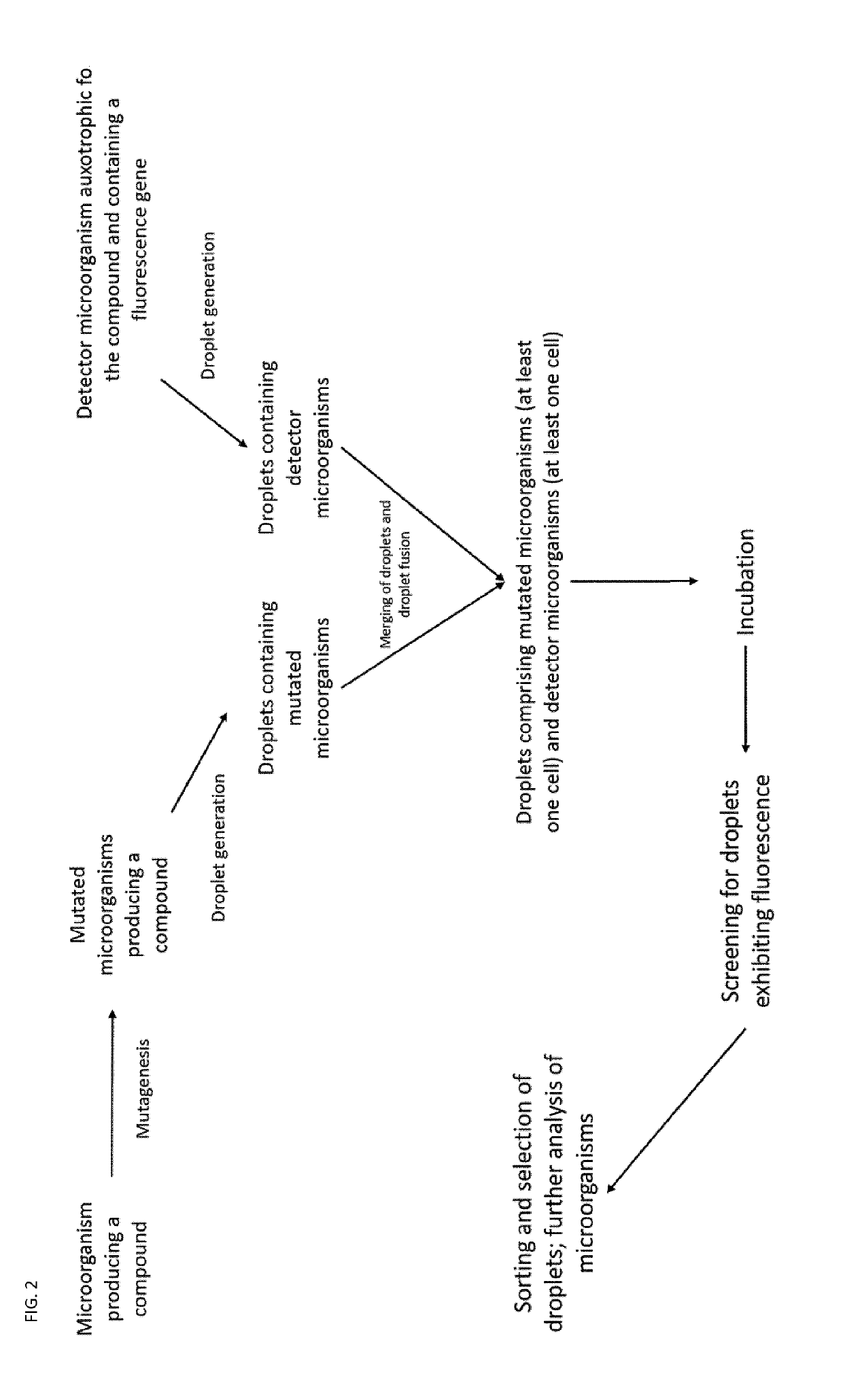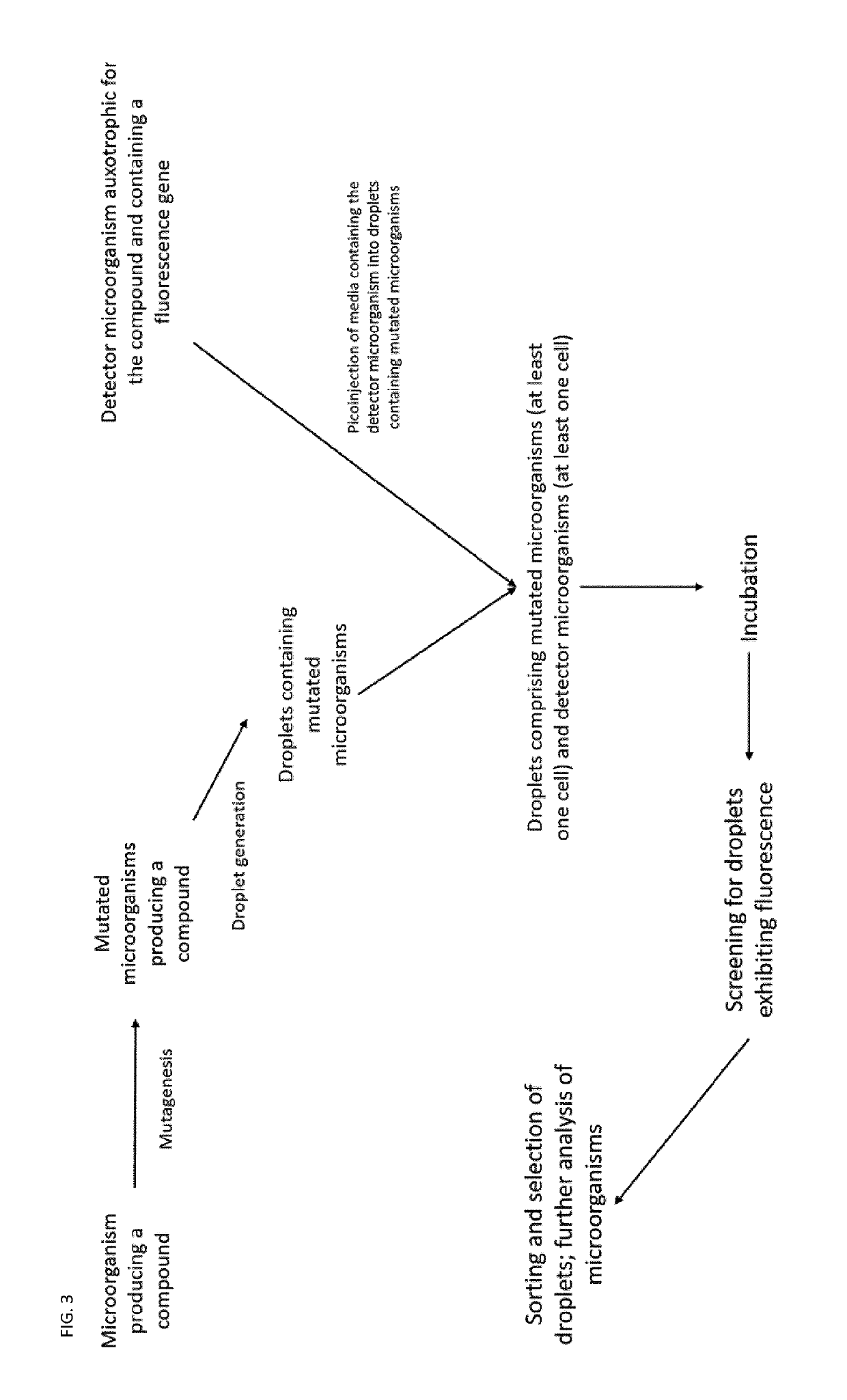Auxotrophic selection system
a selection system and cell culture technology, applied in the field of cell culture analysis, can solve the problems of limiting the application of all strategies, and reducing the number of library members,
- Summary
- Abstract
- Description
- Claims
- Application Information
AI Technical Summary
Benefits of technology
Problems solved by technology
Method used
Image
Examples
example 1
[0179]A strain of Escherichia coli (e.g., MG1655) is transformed with a plasmid (named here as pTrp) containing the trpABCDE operon under the control of a strong constitutive promoter. The E. coli strain harboring pTrp is able to overproduce L-tryptophan and secrete the amino acid in to the surrounding culture medium, hereafter referred to as the “producer strain”.
[0180]A strain of Saccharomyces cerevisiae that is auxotrophic for L-tryptophan and L-leucine (e.g., W303 and its derivatives) is transformed with a plasmid (named here as pFluor) containing the coding sequence of a fluorescent protein (e.g., GFP, eGFP, mCherry, RFP, etc.) under the control of a strong constitutive promoter (e.g., PTEF1) as well as the gene or gene operon that allows for intracellular production of L-leucine. Such complementation of the L-leucine auxotroph allows for positive selection of S. cerevisiae cells harboring the pFluor plasmid. When cultured in the presence of L-tryptophan but in the absence of L...
example 2
[0184]A strain of E. coli is engineered to overproduce L-tryptophan via replacement of the native trpABCDE promoter with a strong constitutive promoter. However, feedback regulation has been shown to limit the amount of L-tryptophan that can be produced by this engineered E. coli strain. To overcome this feedback regulation and other regulatory phenomena that may limit L-tryptophan production, the engineered strain is subjected to UV-induced random mutagenesis, generating a library of L-tryptophan-producing E. coli strains. Following generation, this library is cultured on solid medium. Prior to plating on a solid medium, the library is sufficiently diluted such that clonal isolates are obtained on solid media following a period of incubation.
[0185]A strain of Saccharomyces cerevisiae that is auxotrophic for L-tryptophan and L-leucine (e.g., W303 and its derivatives) is transformed with a plasmid (named here as pFluor) containing the coding sequence of a fluorescent protein (e.g., G...
example 3
[0189]A strain of E. coli is engineered to overproduce L-tryptophan via replacement of the native trpABCDE promoter with a strong constitutive promoter. However, feedback regulation has been shown to limit the amount of L-tryptophan that can be produced by this engineered E. coli strain. To overcome this feedback regulation and other regulatory phenomena that may limit L-tryptophan production, the engineered strain is subjected to UV-induced random mutagenesis, generating a library of L-tryptophan-producing E. coli strains. Following generation, this library is cultured on solid medium. Prior to plating on a solid medium, the library is sufficiently diluted such that clonal isolates are obtained on solid media following a period of incubation.
[0190]A strain of Saccharomyces cerevisiae that is auxotrophic for L-tryptophan and L-leucine (e.g., W303 and its derivatives) is transformed with a plasmid (named here as pLux) containing the coding sequence of the lux luminescence operon unde...
PUM
 Login to View More
Login to View More Abstract
Description
Claims
Application Information
 Login to View More
Login to View More - R&D
- Intellectual Property
- Life Sciences
- Materials
- Tech Scout
- Unparalleled Data Quality
- Higher Quality Content
- 60% Fewer Hallucinations
Browse by: Latest US Patents, China's latest patents, Technical Efficacy Thesaurus, Application Domain, Technology Topic, Popular Technical Reports.
© 2025 PatSnap. All rights reserved.Legal|Privacy policy|Modern Slavery Act Transparency Statement|Sitemap|About US| Contact US: help@patsnap.com



